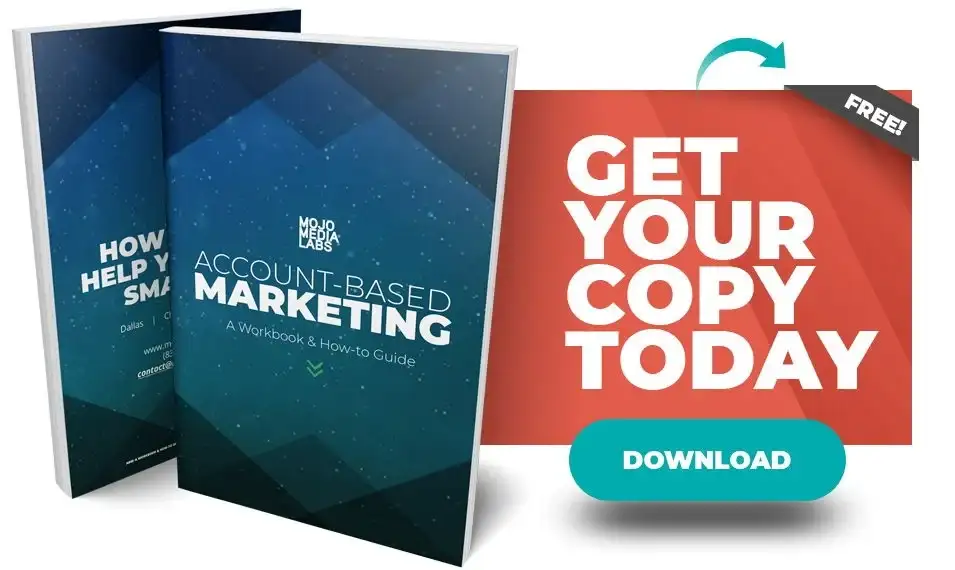Aligning ABM Roles and Responsibilities: Marketing
Last week we discussed ABM roles and responsibilities for Sales. This week, we're diving right into Sales' partner throughout the process: Marketing. We address common objections and benefits of ABM for Marketing, and provide descriptions of roles and responsibilities that fall on the shoulders of Marketing. Our goal in this chapter is to help you learn how account-based marketing programs allow Marketing to collaborate more effectively and efficiently across the organization.


Common Marketing Objections to Account-Based Marketing
Just as with Sales, it can sometimes be difficult to get the Marketing team on board. A new venture may seem daunting when they're already inundated with so much content creation and campaign monitoring. Here are some of the most common objections from Marketing to implementing an Account-Based Marketing program:
Sales won't provide a target account list or work with Marketing to build one
Collaboration keeps the account-based marketing program humming along like a fine-tuned machine. To achieve harmony, tensions between departments must be addressed and dispelled. Marketing may not have historically gotten what they need from Sales to do their best, so it's important to find a starting point. This means the key is finding somewhere to start collaborating and building trust. Whether that is a sales development representative or someone from the ABM Leadership team to encourage interaction, it's important to find your "in" to begin the process. From here, you can begin working to build a great target account list.
ABM is more expensive than the current budget allows
Another all-too-common objection lies in budgeting. Often, Marketing departments have to fight for their budget, but account-based marketing means an end to this battle. With an account-based marketing program, Marketing efforts are directly tied to business objectives, so when Marketing spends budget on creating optimized content for target accounts and the supplementary Sales enablement materials, these efforts are more visible across the organization. Not only this, but the efficiency that account-based marketing brings to Marketing means there is a higher acquisition of the right leads from target accounts on the same budget.
With account-based marketing, you will be proactively spending a larger portion of the budget on target accounts with a higher likelihood of conversion and larger average contract values.
Too busy for ABM
Following the above points about the budget, Marketing is often tasked with spray and pray tactics that attempt to target a number of leads to keep the pipeline full and Sales happy. Account-based marketing's strategic efficiency means a decreasing number of campaigns and tactics in favor of higher ROI campaigns. With fewer campaigns to maintain and the heightened ability to personalize and optimize those campaign materials for target accounts and their respective Sales contacts, Marketers can breathe a bit easier.
What Does ABM Bring to Marketing?
ABM programs have a variety of benefits for organizations, and many of them relate to Marketing's daily life. It all comes down to the ability to strategically analyze what is currently happening, how it affects key business objectives, and where optimization in future ABM campaigns can occur. Some of the key benefits of account-based marketing programs for the marketing department include:
Proven Efficiency: Strategic assessment and planning for a target account list mean fewer campaigns and higher ROI overall. No more spray and pray marketing.
Tying marketing to the bottom line business finances: As ABM ties directly to business objective impact, the spending Marketing performs to attract and engage target accounts is more easily tied to bottom line business finances.
Collaboration between sales and marketing: As previously mentioned, it's time to bridge the gap. ABM is only as strong as the alignment and collaboration within the organization, so the battle between the departments stops here.
Ability to provide insights and data to help Sales hit goals: Marketing has long spoken its own language, referring to web conversions and metrics. With account-based marketing programs, Marketing begins to speak the language of Sales and the rest of the organization, translating its traditional department metrics to those relating to business metrics. Operations can help by creating excellent accessible reports that the entire organization can understand while still highlighting Marketing's fantastic web conversion work.
Better budgeting and segmentation strategies: It's easier to budget when you are absolutely certain of your target accounts. Rather than seeking lead quantity, Marketing now can hone in on specialized optimized content for target accounts. They have an intimate knowledge of what the individuals within the accounts need and how their business can help them. The key insights ABM provides allow for more strategic segmentation that can be reflected quite clearly in the budget. A Marketing dream come true!
Overall, each of these benefits leads Marketing to connect to 3 business objectives: increased contract size, closed revenue, and pipeline velocity. With this understanding, it becomes much easier to define roles and responsibilities within Marketing.
Marketing Roles and Responsibilities
Collaboration is important to ABM success, but so too is the delegation of roles and responsibilities. Just as Sales has a specific target account list owner, so too will Marketing have defined accountability within the ABM process. Some of the items Marketing is responsible for include the following:
Sales Enablement: Marketing will create, maintain, and strategically optimize all Sales enablement material to help Sales close revenue with higher contract values. This includes:
- Field marketing materials
- Sales follow-up reminders
- Specific campaign action items (emails, phone calls, LinkedIn messaging, etc)
- Knowledge base within company intranet (to reduce email banter)
- Campaign measurement/tracking
Optimized Account Campaigns: These are iterative, personalized campaigns that are optimized reach and convert the right accounts at the right time with the right material.
These campaign pieces can include:
- Web pages
- Emails
- Advertising
- Direct mail
- Digital downloadables
Pre and Post Launch Measuring: Marketing creates benchmarks before launching ABM to understand where the program is starting. This makes connecting closed revenue to KPIs and business objectives based on Marketing input much easier.
Note: Remember to translate marketing KPIs into business objective and Sales language. Operations can help create accessible reports to make this a reality
Putting the Marketing in Account-Based Marketing
ABM's greatest strength comes from collaboration and making Marketing accessible to other areas of the organization. Previously a siloed department whose efforts never received any gratitude when deals closed, Marketing is now a key component and a true foundation of ABM programs. By tying Marketing to business objectives and finances, there is greater collaboration and higher success closing the best accounts across the organization.

Sign-up for The Weekly Mojo, our weekly newsletter with the best digital marketing content delivered right to your inbox.
Get Your Weekly Mojo


